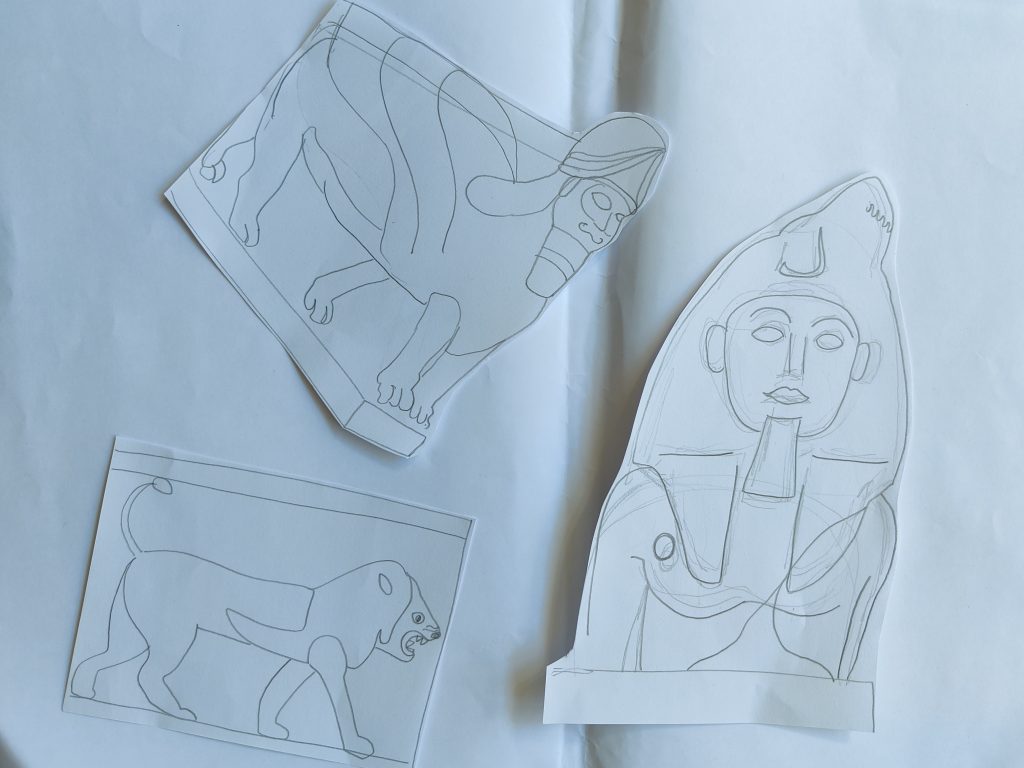With my enquiry refined from a visual exploration of encoding and decoding to a curiosity specifically about biblical historicity and the textile translation of text and artefacts, I continue the technical work of graphically communicating and designing through the craft to explore the tapestry of biblical history.
Translation progress:
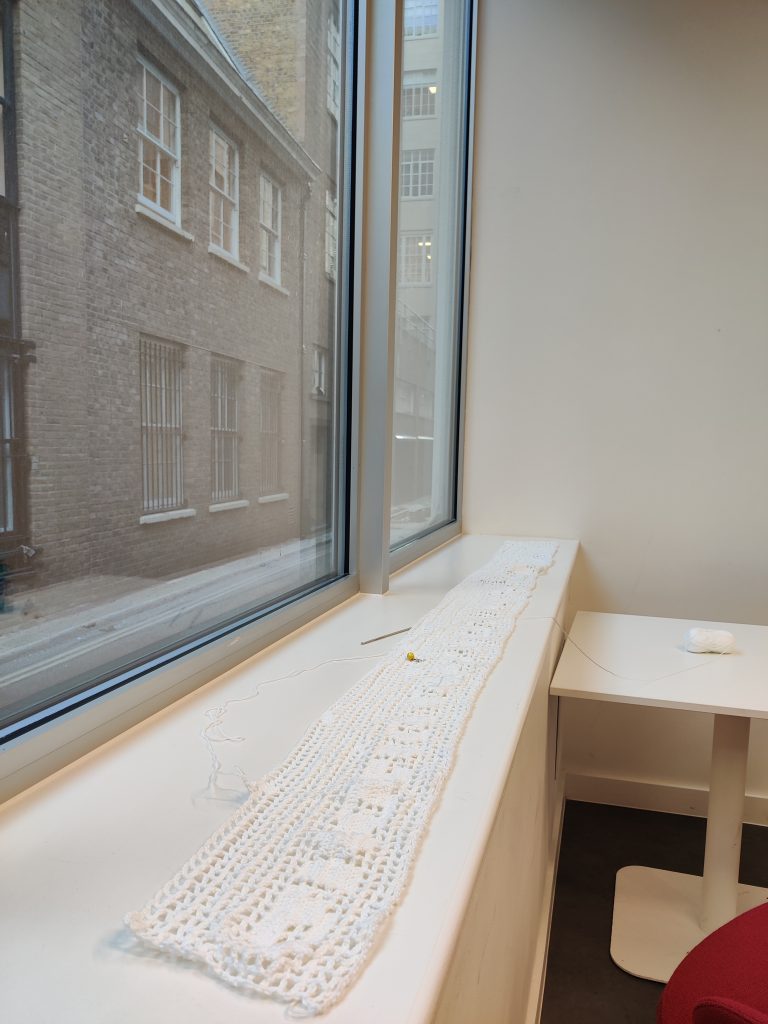
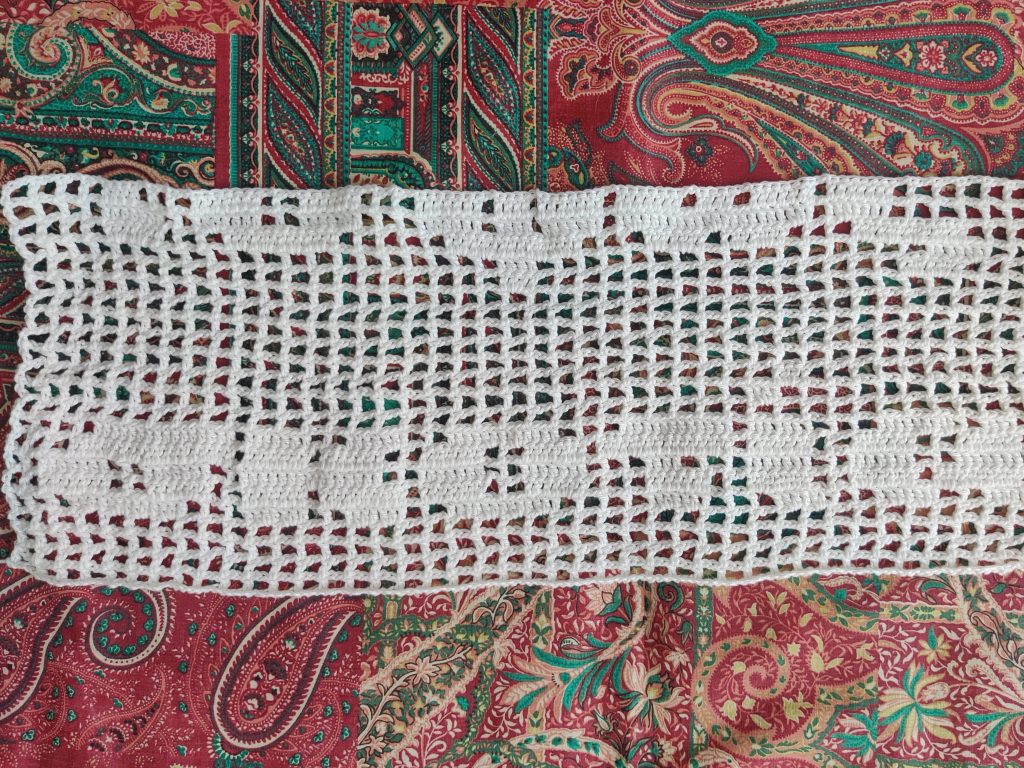
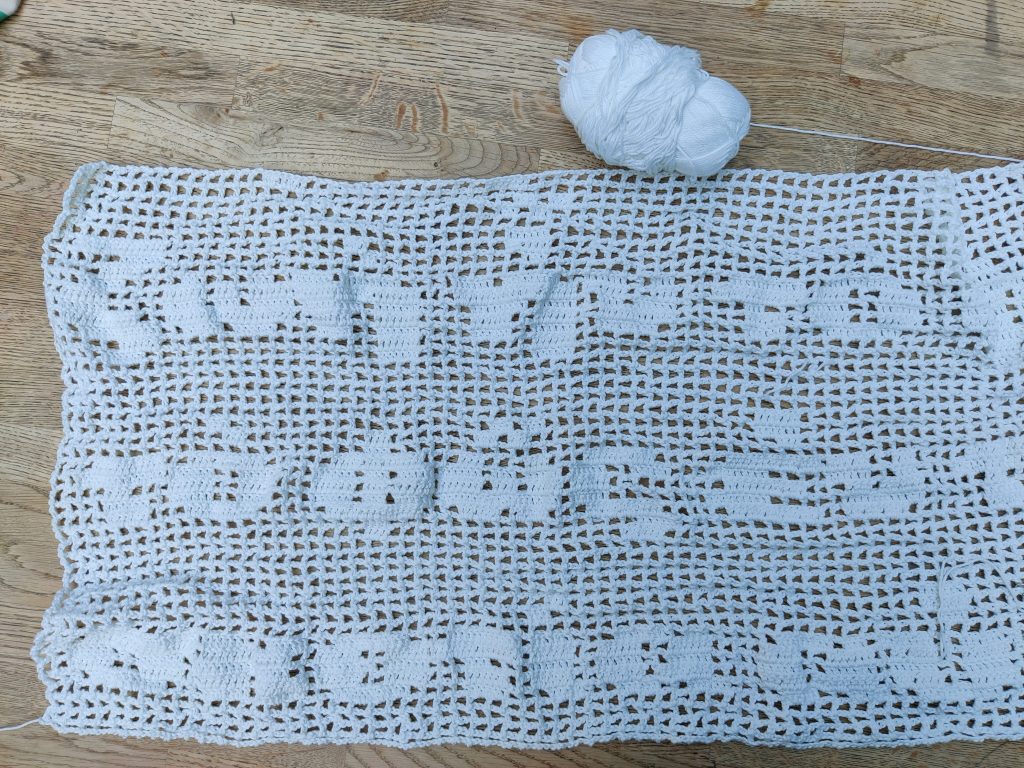
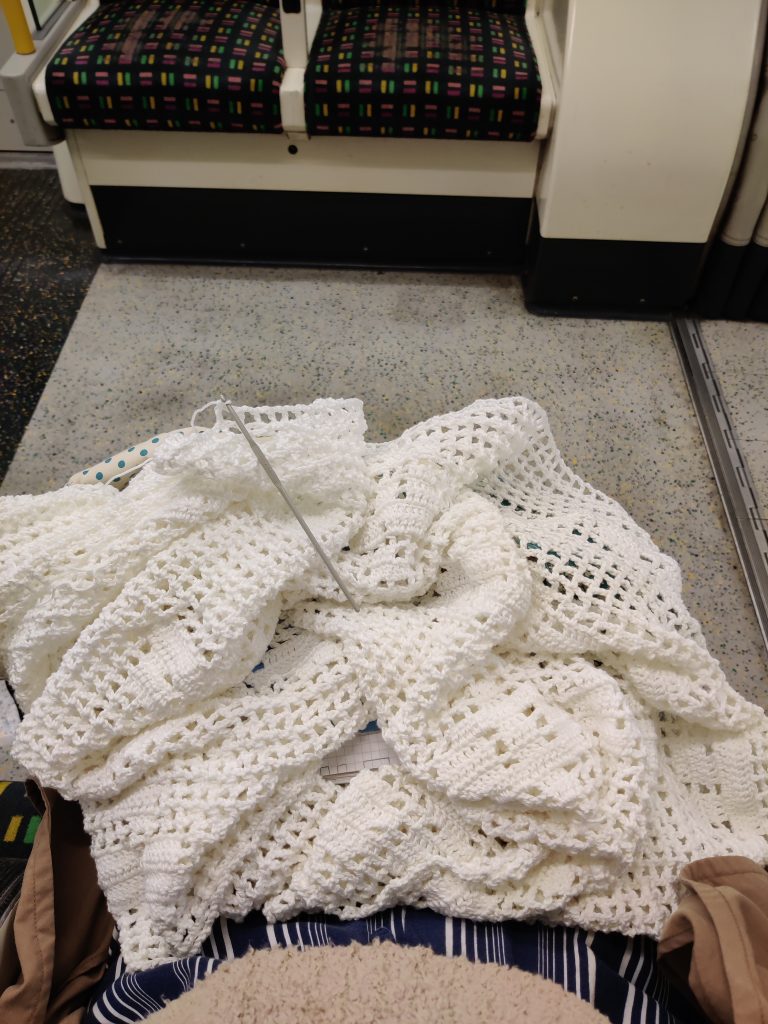
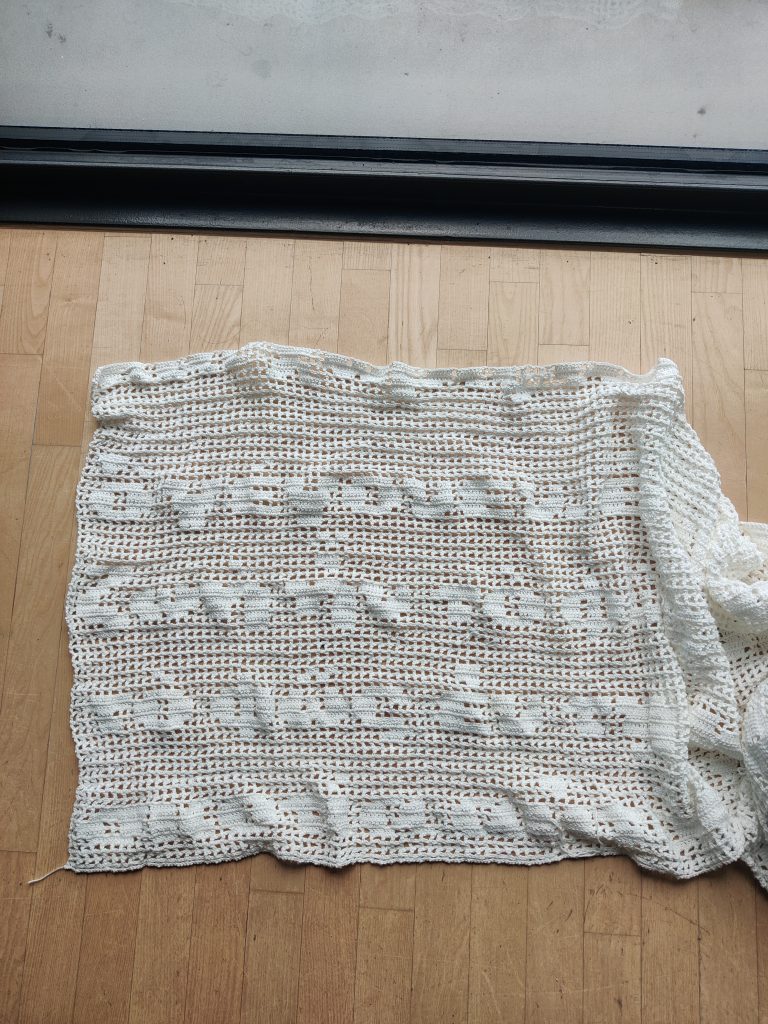
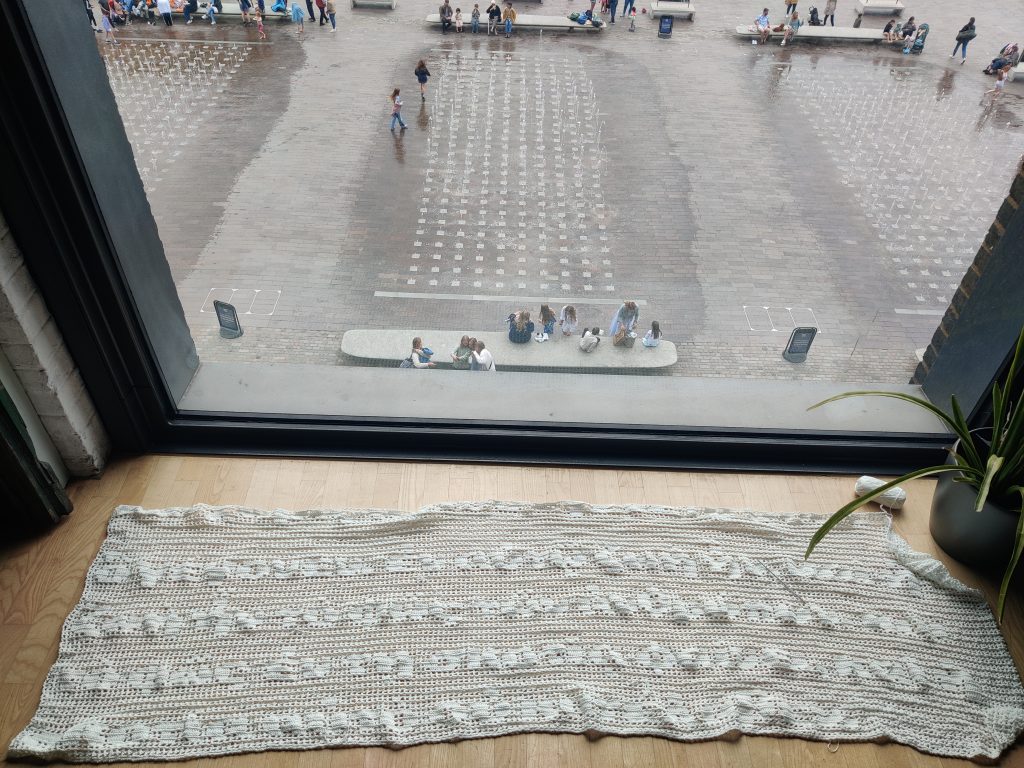
In continuing the textile translation of John 1:1-5, I have also been iterating through ideas for a ‘reader’ of the text(ile) to unlock the meaning/to translate it without knowing Greek/to decode the piece/to codebreak it. This concept loops back into previous articulations of my enquiry, which started as an exploration of encoding and decoding. Though it has been refined to look with focus at the translation and trustworthiness of biblical manuscripts, I seek to make space for a viewer of the piece to engage with decoding with their own mind/cognitive ‘computer’. This engagement of the mind is reminiscent of Yoko Ono’s ‘Music of the Mind’ concept, which also helps situate this work conceptually in a perhaps unexpected way. I have been inspired by Yoko’s ideas around art/design-works being made/completed in the mind, having used her exhibition (https://www.tate.org.uk/whats-on/tate-modern/yoko-ono) as a reference in Positions Through Contextualising.
Taking inspiration from Danielle Aubert’s Excel drawings (https://www.danielleaubert.info/16-months-worth-of-drawings-in-microsoft-excel/), I opened Microsoft Excel and resized many columns to be the same as their row length, making them all square pixels. In this way the program could digitally mirror the “pixels” with which I had drafted the pattern using squared paper.
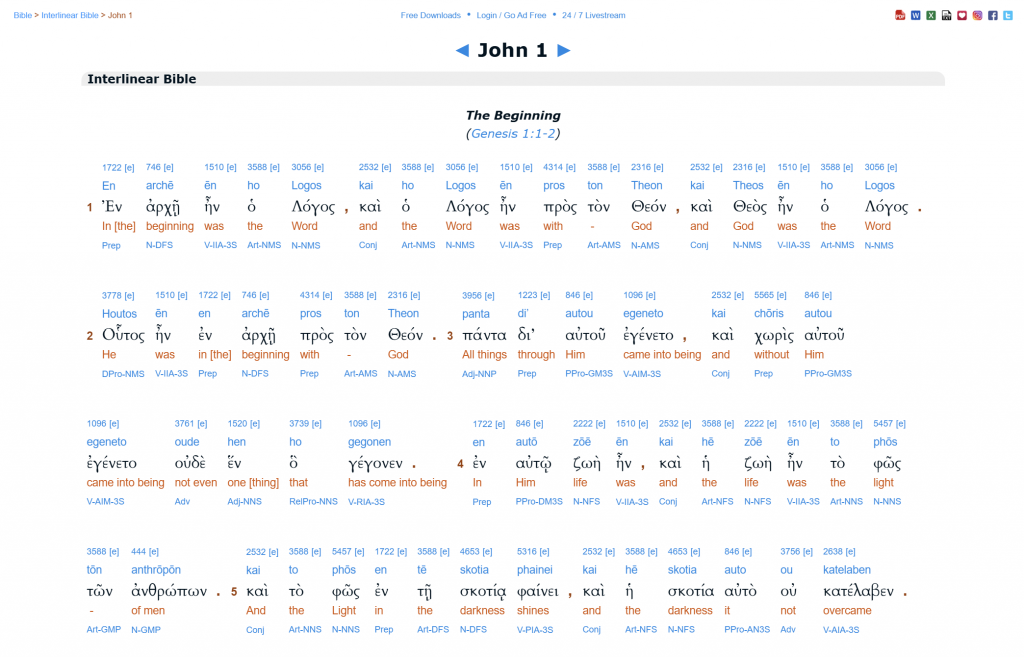
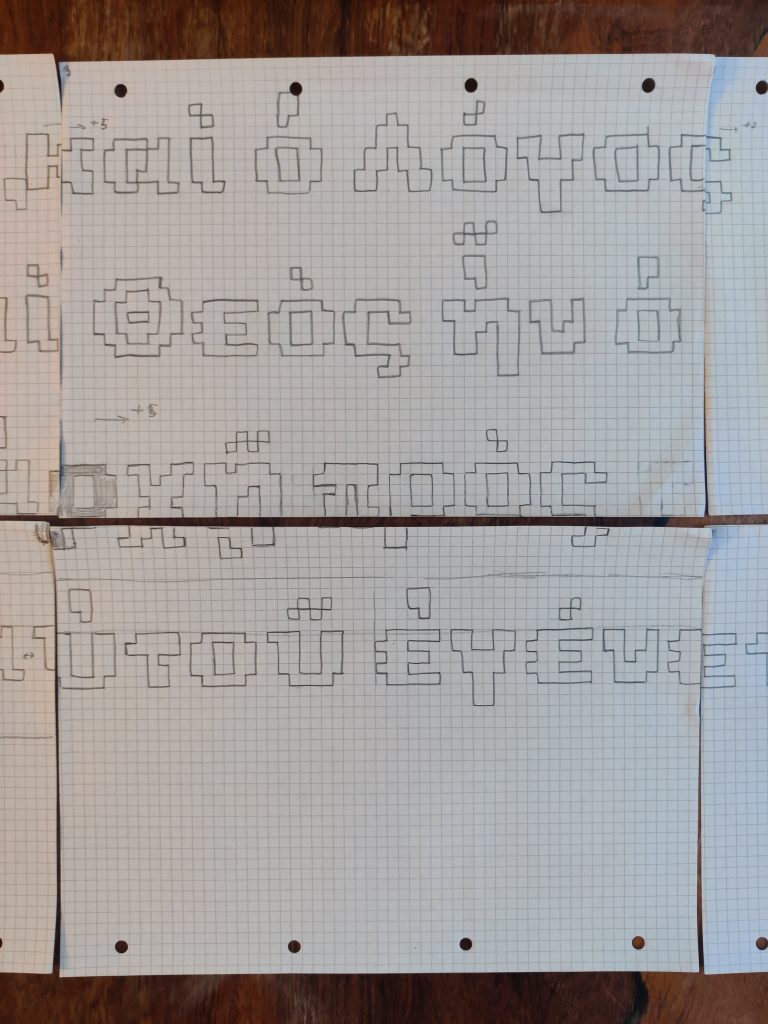
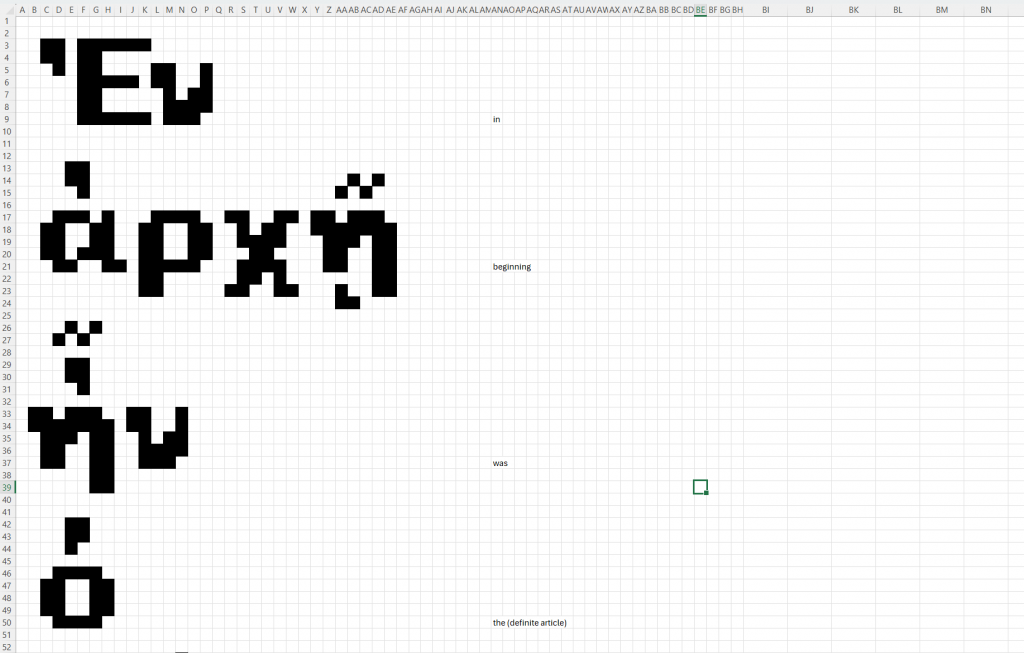
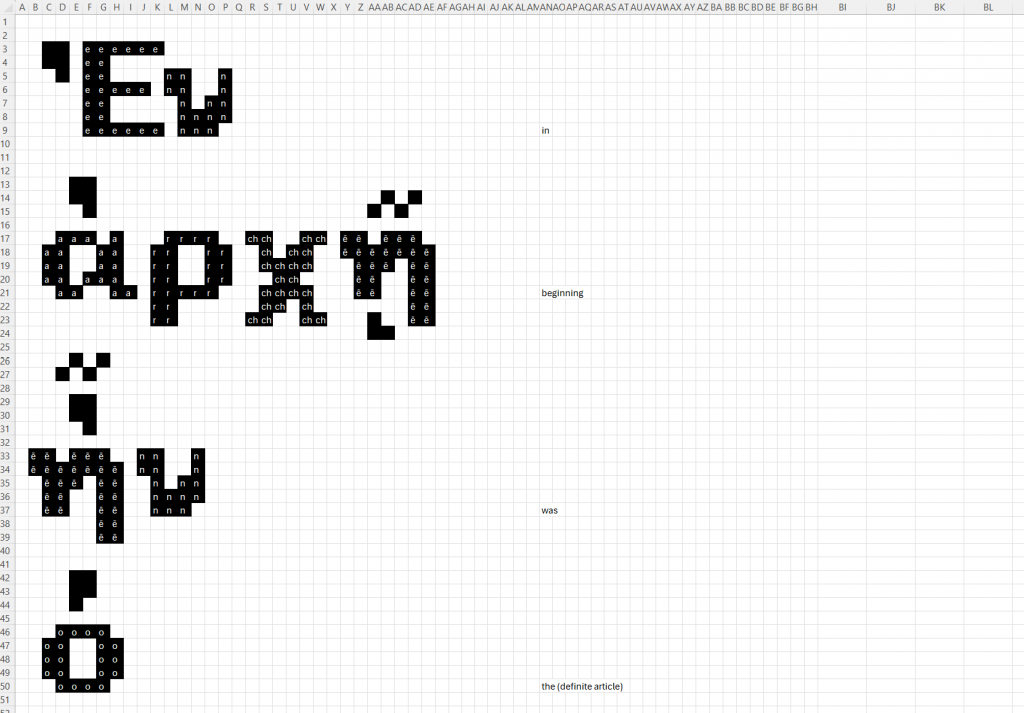
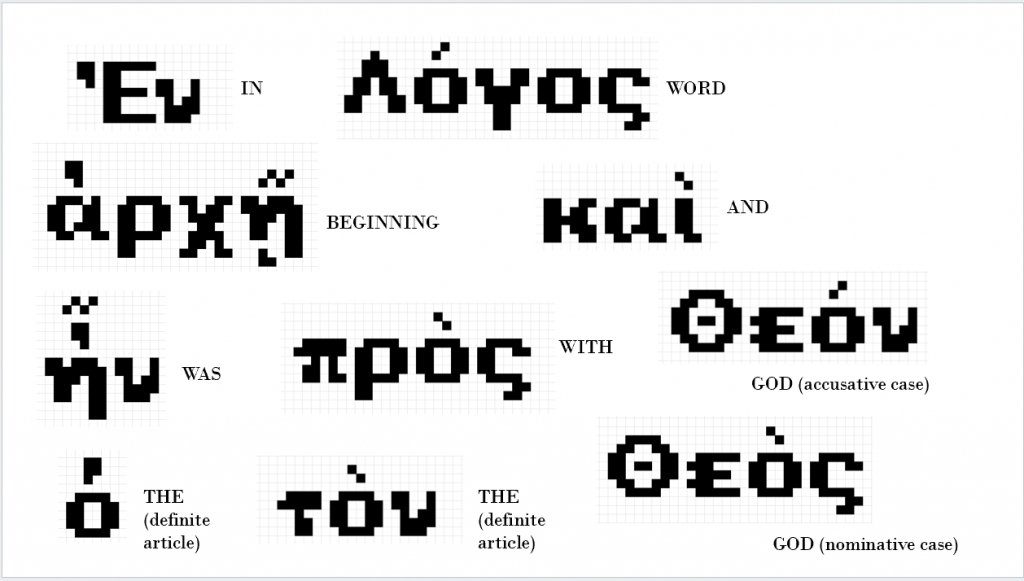
I have also been open-eyed to any examples of crochet typography in my day-to-day, such as in shop windows near Old Bond Street:
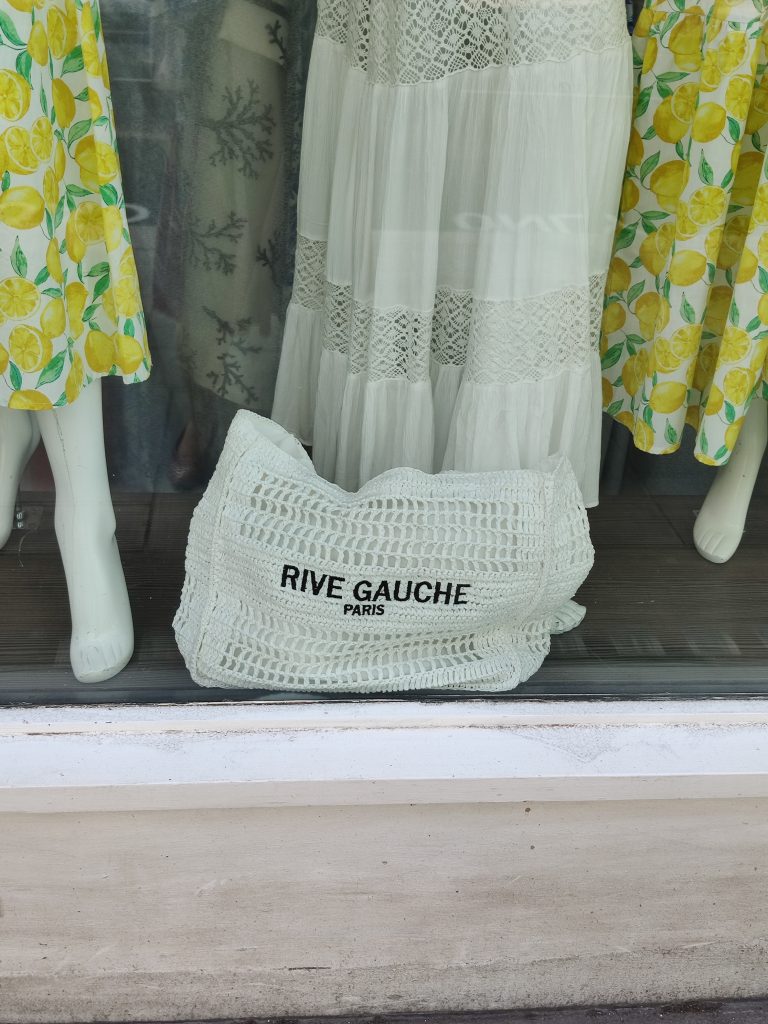

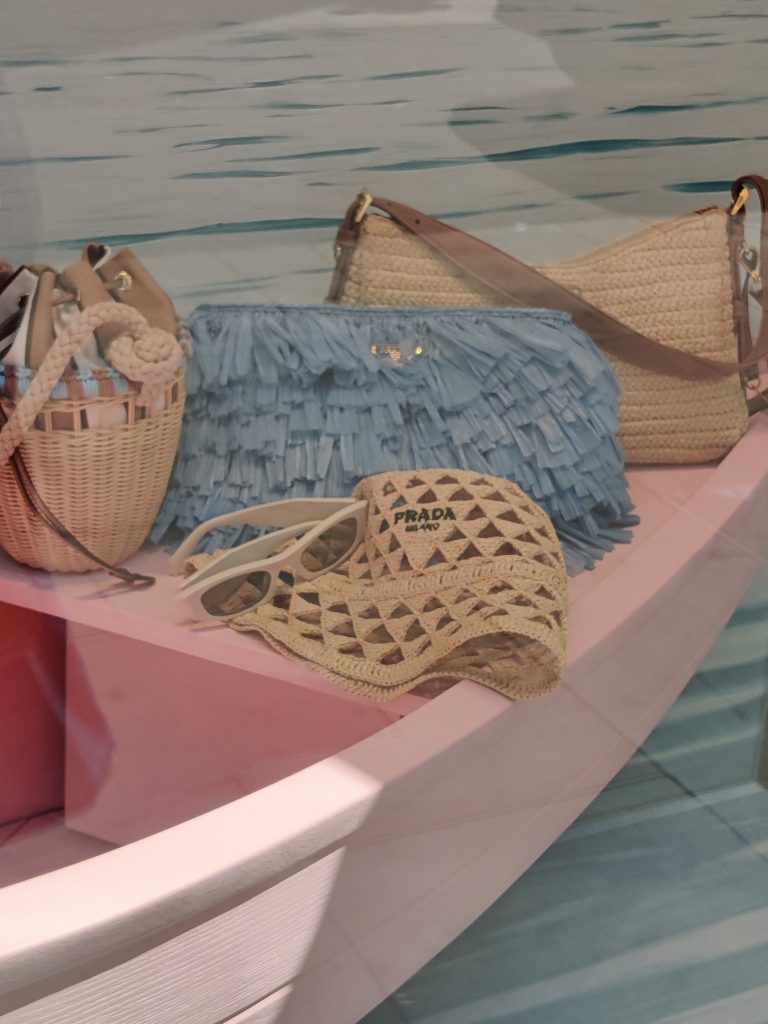
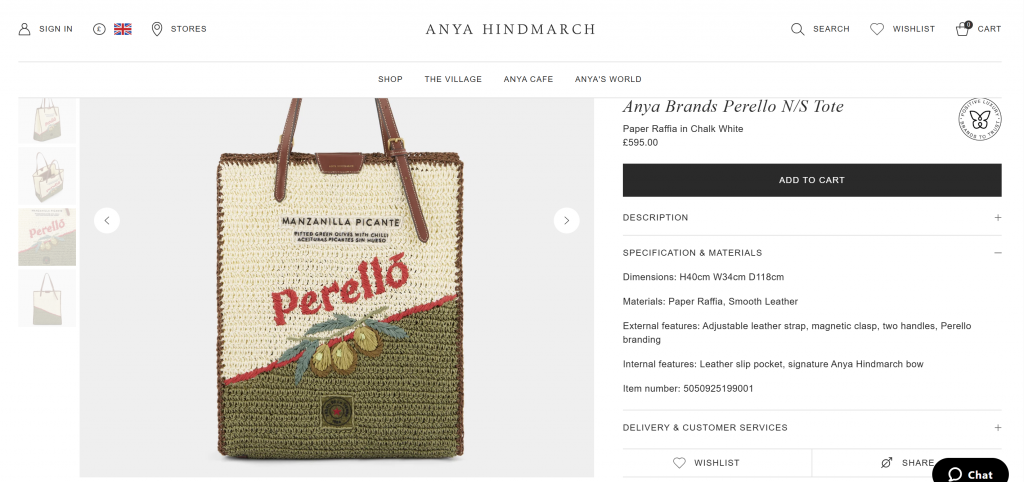
And continuing to explore the work of other creatives in the embroidered visual communication space, such as Pascal Monteil,
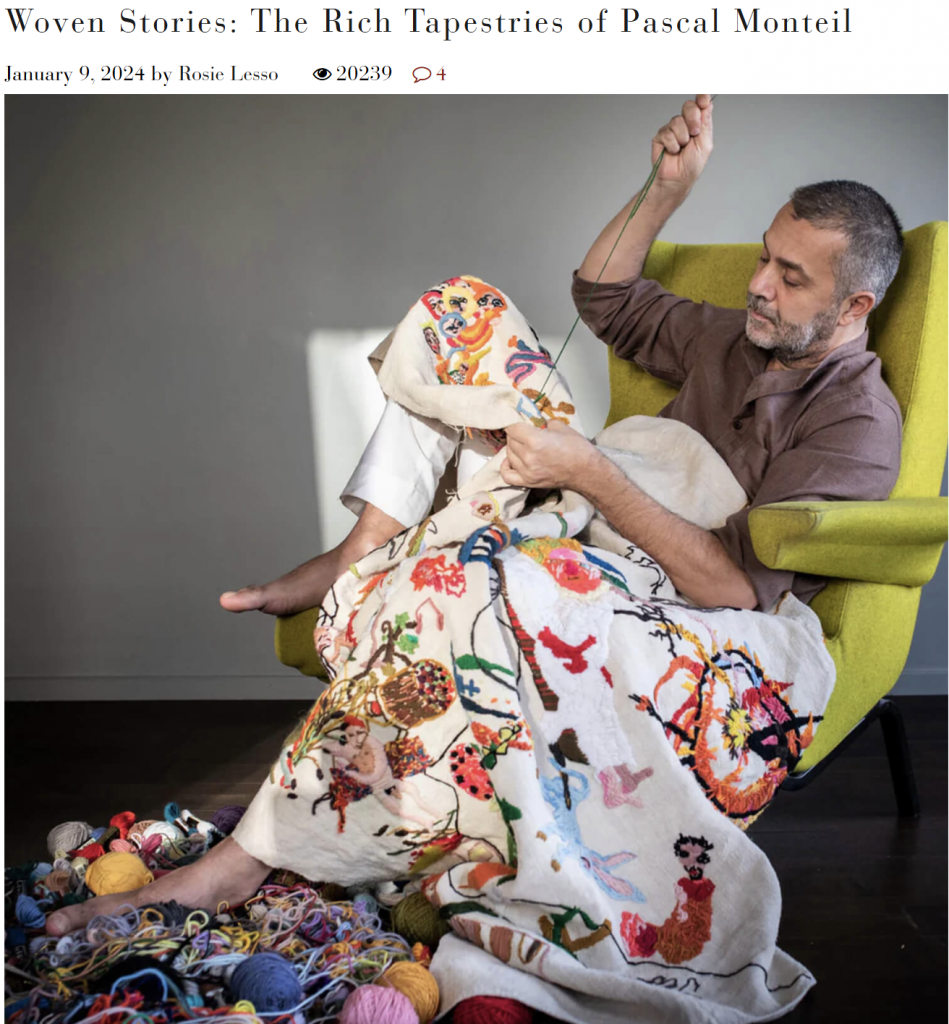
as well as the historical connections between textiles/craft being relegated to the position of ‘women’s work’ and not necessarily considered ‘graphic communication design’ or art, such as outlined in this article: https://www.sothebys.com/en/articles/textiles-the-art-of-womens-work
Researching/reading around ideas about drawing/illustrating/graphic designing in thread, I came across this quote, which reminds me again of the Yoko Ono ‘music of the mind’ previously referenced, and the use of human thought to rationalise/complete a picture. All the artefacts I have been looking at started off as immaterial/human thoughts. Again here my enquiry opens possibilities to explore the metaphysical and draws on my academic background in neuroscience/philosophy of mind. I do not have time in this project to explore these questions, such as ‘What is creativity?’, ‘Where is an idea before it is physical?’. When I have an idea, such as to make a thread drawing, there is no way for someone to access that thought – an MRI could pick up areas of my brain that might be activated, but the contents of the thought are immaterial until shared. But my enquiry is hinting at an intelligence beyond human minds – how could one discern if the author of a piece of graphic communication design is divine?

This quotation has been helpful in distilling my thoughts, and for my project to “reveal possibilities” about the trustworthiness of biblical accounts, and to “reflect and provoke thought and imagination”.
I have also been mentally re-referencing and re-thinking about the indexing of biblical artefacts as not just a map but a new compilation/timeline. I have been looking at Batia Suter’s visual encyclopediae and her play with scale and juxtaposition of images to create something new (https://www.youtube.com/watch?v=FpRM4-aAa1I), as well as Aladin Borioli’s history of hives joined up into one publication:
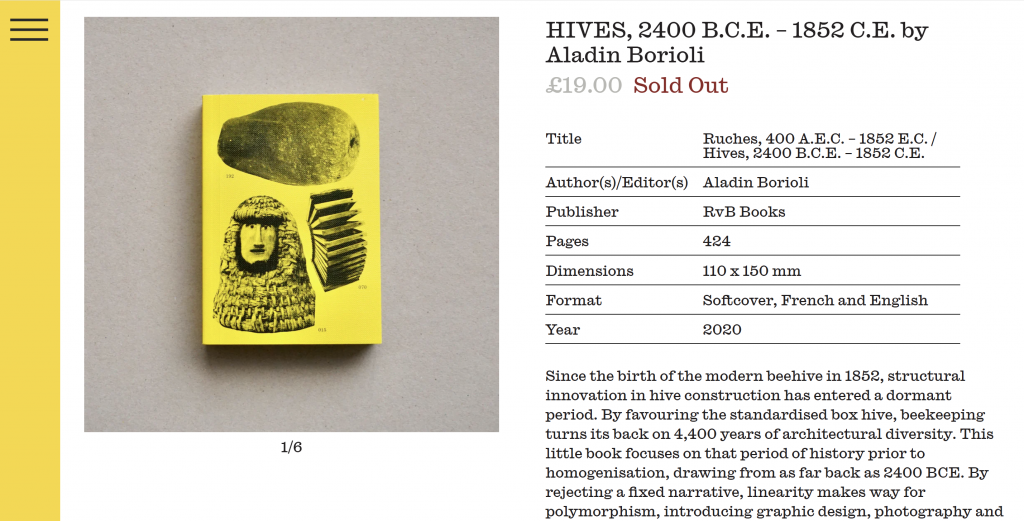
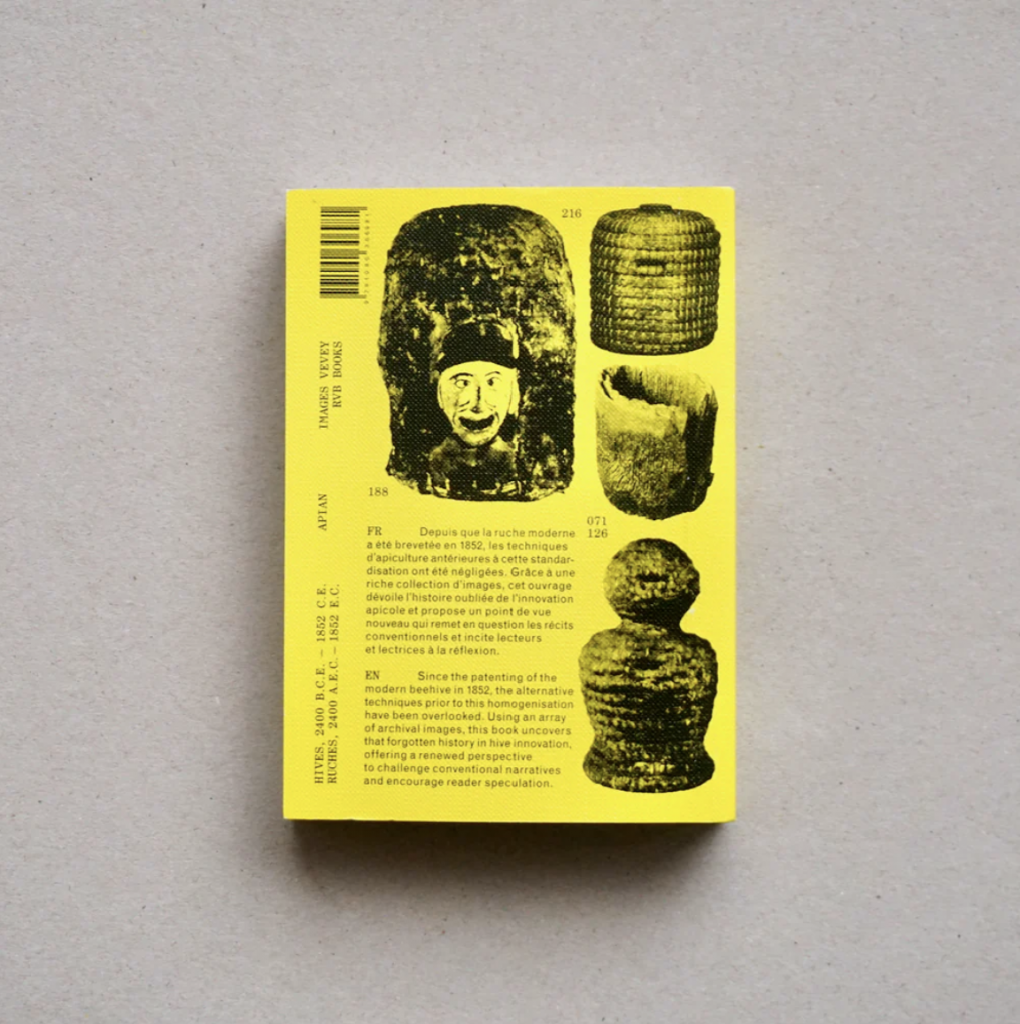
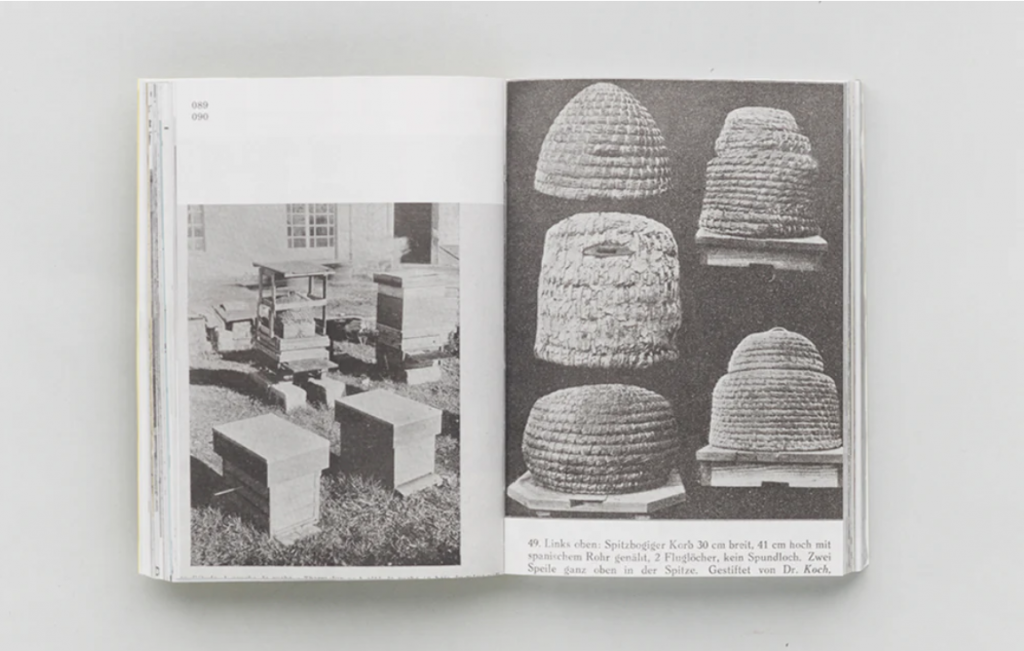
Is an embroidered timeline a publication? I had previously been caught up with the idea of maps/re-mapping the artefacts upon the British Museum map, but there are other possibilites, such as mapping a timeline.
I came across a book on rag rugs in the CSM library and also here find interest in its visual contents and descriptions about “conviviality”, and again an exploration of a textile art form not always recognised as graphic communication design. The “conviviality”/connotations of softness/gentleness/hospitality afforded by the textile media are important to my enquiry: it is an invitation for curiosity/conversation rather than a hard and harsh imposition of worldview/religion.
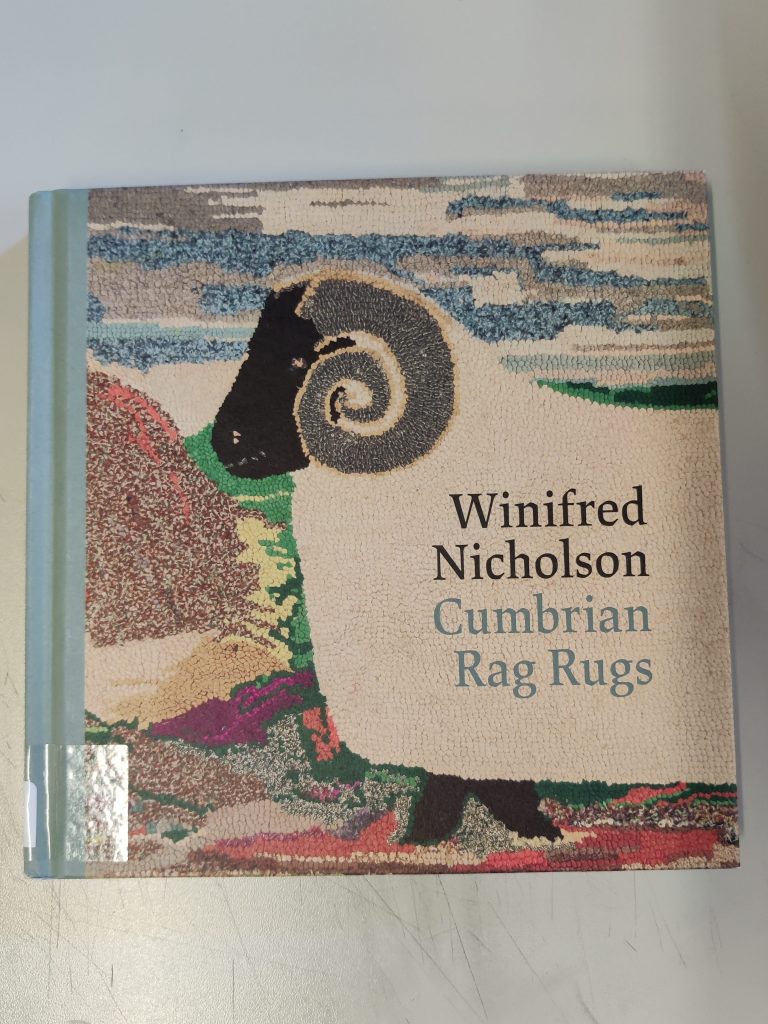

Placing my initial stitched sketches together to consider ways of presenting further iterations, I need to pick which artefacts I represent. I am considering one artefacts per empire, as logos/emblems, such as the glazed lion panel to represent Babylonia, rather than drawing every artefact relating to Babylon and the Bible in the Museum (as there are many).
